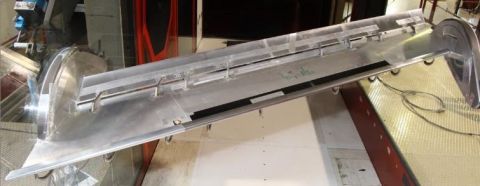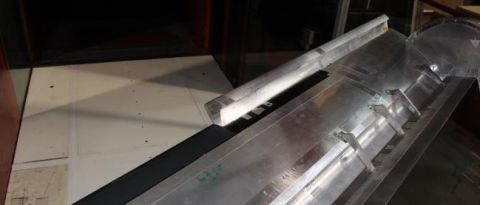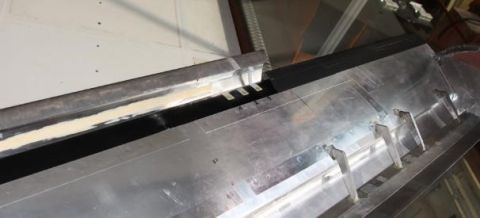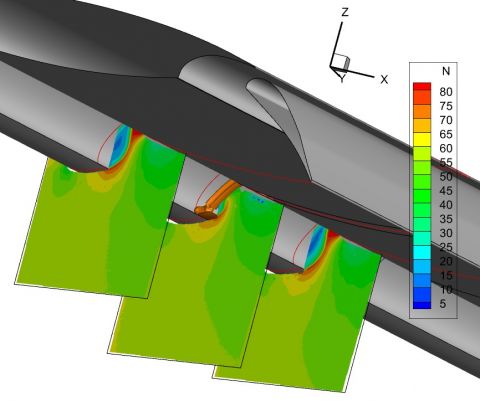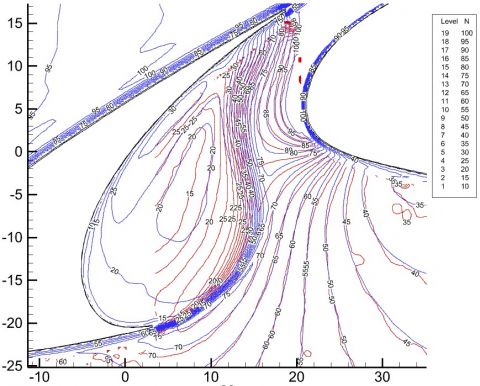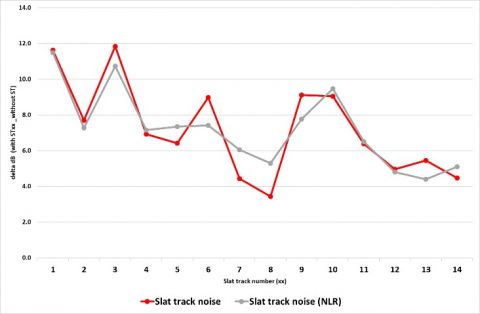Tests of slat tracks and porous slat inserts in F2@ONERA
June 30, 2022
The objective of these tests in ONERA’s F2 windtunnel is to characterize the steady/unsteady flow and radiated noise generated by a range of low noise slat tracks and slat porous inserts, and the combination of both.
In the INVENTOR workflow, this test campaign was a continuation of two former preliminary experimental acoustic assessments achieved on the same, but modified (flapless), F16 model with a continuous (2.5D) slat (Fig. 1). The first experiment was achieved with a 0° sweep angle on various slat porous inserts in the aeroacoustic wind tunnel AAWT facility at University of Bristol and the second experiment was achieved with a 30° sweep angle on several generic and low-noise slat tracks in the aeroacoustic wind tunnel AWT in NLR. Both experiments in AWT and AAWT aimed at checking and ranking at reduced cost the noise performances of a large range of slat tracks and slat porous inserts.
Thanks to better aerodynamic conditions (closed section) and up-to-date optical flow measurement devices (PIV, LDV) and a specific acoustic instrumentation (microphone array in the ceiling beneath a Kevlar wall) the F2 windtunnel has helped selecting the best designs based on more detailed aerodynamic/acoustic measurements, and also provide experimental validation to numerical simulations. Moreover, in addition to the former tests at NLR and UoB, additional inboard/outboard slat side edge configurations have been tested, especially to characterize the aeroacoustic behavior of a slat track close (3 possible positions) to such discontinuity (Fig. 2).
Fig. 3 (left side) shows examples of 3 PIV maps (out of 21) close to the slat track. Right side plot shows a comparison of flow velocity magnitude contours measured by PIV and computed with LBM.
In terms of acoustics, the microphone arrays provided deconvoluted noise maps that can be integrated in small areas around the slat track to isolate the noise spectrum radiated by this element. An interesting result is that the acoustic ranking (in terms of OASPL) of all 14 different slat tracks designs measured in AWT (NLR) with a continuous slat was pretty well recovered in F2 (Fig. 4), despite the more difficult acoustic conditions (higher background noise and reverberation on solid walls.
The results of this F2 test campaign will help in ultimately selecting the best slat inserts and slat track noise reduction designs and technologies to be assessed at full aircraft level (but small scale) in NWB at the end of INVENTOR.
Fig. 1: F16 model with continuous (2.5D) slat and flap and a 30° sweep
Fig. 2: Left side: inboard slat side edge aligned with the chord direction
Right side: outboard slat side edge aligned with the flow direction
On both configurations the 3 slat tracks positions are visible
Fig. 3: PIV measurements:
Left side: 3 chordwise planes (central plane is centered on the slat track)
Right side: comparison of flow velocity magnitude contours measured by PIV (red) and computed with LBM (blue)
Fig. 4: Acoustic measurements: Comparison of OASPL for 14 different slat track designs measured in F2@ONERA (red line) and AWT@NLR (grey line)

